After Hurricane Katrina, Home Gardeners Saved New Orleans’ Iconic Squash
The Louisiana mirliton has survived revolution, industrial competition, and floods.
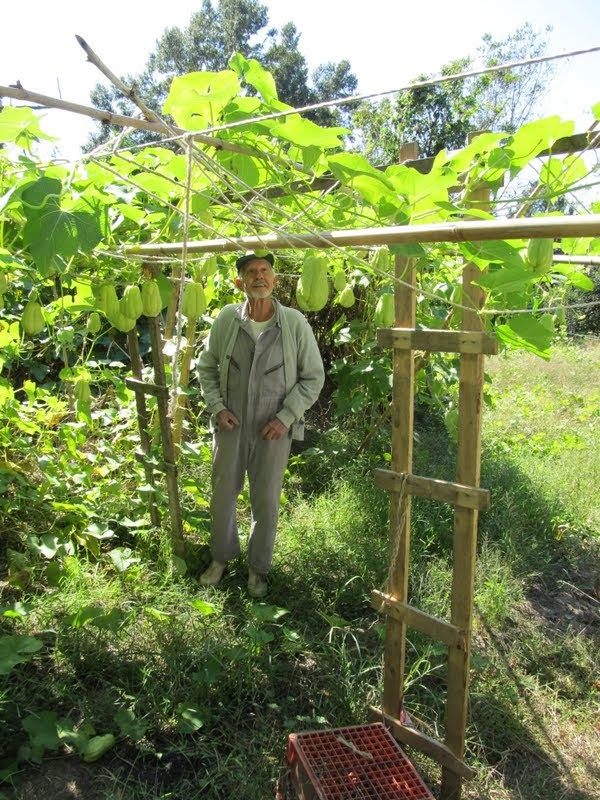
“We normally don’t have a spring crop,” says Paul D’Anna, a home gardener in Metairie, Louisiana. But this year—maybe it’s the weather or, though he’s loathe to talk himself up, maybe it’s his green thumb—he got lucky: His backyard vines have already produced around 70 fruits. He’s placed the plump and ridged green gourds in black pots, their tangled tendrils spilling over the sides, and is advertising them online to other backyard gardeners. For many New Orleanians and Gulf Coast residents, the vegetable D’Anna’s selling is as rare, and as precious, as the unexpected spring crop itself: the Louisiana mirliton.
Mirlitons, more commonly known in the United States by their Central American name, chayote, have been a New Orleans neighborhood staple since they entered the region in the early-19th century. At one time, they draped lushly over the chain link fences between neighbors’ houses, their fruit collective property. Their crunchy, zucchini-flavored flesh, which plumps into moist meatiness when cooked, is a versatile player in Cajun and Creole cooking, inspiring salads, pies, and a signature Thanksgiving casserole. Yet in the last decades of the 20th century—driven by garden-unfriendly urban development and competition from less-expensive Latin American imports—Louisiana mirlitons all but disappeared. Following Hurricane Katrina in 2005, many feared the city’s heirlooms were gone for good.
“The flooding killed everything,” says Leo Jones, a life-long New Orleans resident and a home mirliton grower. Louisiana mirlitons are the product of two centuries of selection, and while post-Katrina New Orleanians could still purchase Central American mirlitons, they didn’t come with the same sense of community. The mirliton, says Lance Hill, an activist, historian, and co-founder of a Tulane University racial justice center, is “a very sociable vegetable. It makes friends and it makes neighbors.” It was this culture that community members feared would be lost.

In the past few years, however, New Orleanians have come together to bring the heirloom mirliton back. Mirliton.org, founded in 2010 by Hill, whose evangelism gained him the moniker “Mirliton man,” is the central clearinghouse for all things heirloom, connecting growers with advice, recipes, classifieds, and seemingly endless lore. Since founding the project, Hill and his collaborators, including D’Anna, have scoured the Gulf Coast for heirlooms, passing along seeds to neighborhood growers. Now, with new mirliton plants in the New Orleans Botanical Garden, and stacks of mirlitons filling fall farmers markets, this passion is beginning to bear fruit.
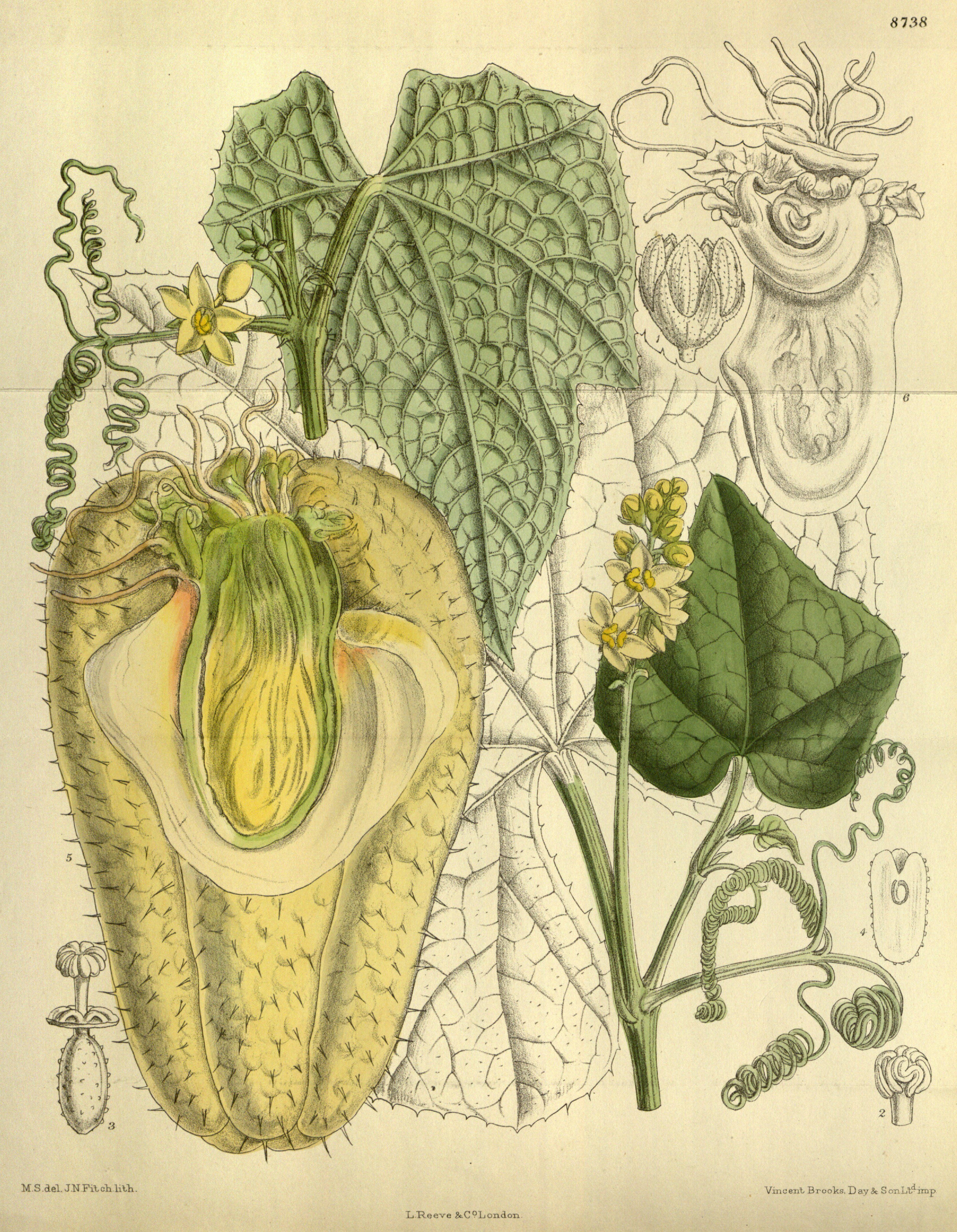
Hill’s history of activism is a fitting partner to the mirliton. He speculates that free Black people first brought the mirliton to New Orleans at the turn of the 19th century, during the Haitian Revolution. The historical record is slim—complicated by both Haitian Creole and Louisiana French being largely oral languages—but it’s telling that, though the fruit has many monikers, from cho-cho in Sierra Leone to iskush in Nepal, Haiti and New Orleans are the only two places where it’s called the “mirliton.” (“It’s mel-eh-tawn,” Hill corrects me on the phone. “Nobody says mir-li-ton unless they’re from the North.”)
The archive does tell us, however, that the squat, pear-shaped gourd is a tiny revolution. A 1967 Haitian stamp features the mirliton in a place of honor near revolutionary Jean-Jacques Dessalines—a demonstration, Hill observes, of an association between the mirliton and freedom. That’s not the only one: On the Indian Ocean island of Réunion, a sugar economy formerly powered by enslaved labor, Hill says fleeing slaves once took mirlitons to the hills with them, the plants’ young shoots, mature fruits, and dried vines providing both food and raw materials. Because of these associations, perhaps, the mirliton—while grown, cooked, and loved in both Black and white New Orleans communities—has a special resonance in Black New Orleans history.
Mirlitons took to New Orleans quickly. “When I was a kid, they had mirlitons all over the place,” says Jones, who grew up eating them from his neighbors’ vines. They were impossibly abundant, their leaves overflowing the chain link fences between neighbors, filtering the hot Louisiana sun into a cool green light. “A lazy person’s vegetable,” says Hill. “You don’t even have to pick it, you can just set a chair under it, sit there with a basket, have a beer and wait.” One mirliton vine can produce between 50 to 100 fruits a year, enough to stock the entire block. Residents waited for the autumn knock on the door that signified a neighbor with a Schwegmann’s bag—reused from a local grocery store—full of the backyard fruit.

For New Orleanians weaned on Cajun and Creole food, late October was synonymous with stuffed mirliton. Boiled, their flesh scooped out and mixed with shrimp, meat, and breadcrumbs, they were the star of Thanksgiving. “Mirlitons were always on the fall table,” says Poppy Tooker, a food activist, writer, and host of the NPR-affiliated radio show Louisiana Eats! Mirlitons’ abundance inspired reams of recipes, from pickled mirlitons—good in a bloody Mary, says David Hubbell, a Mobile-based backyard grower—to mirliton bread, a sweet counterpart to zucchini bread.
It wasn’t a lack of love for mirlitons that caused heirloom cultivation to decline, says Tooker. It was the food industry. Tooker, who founded Slow Food New Orleans in 1999, says that the rise of industrial agriculture spelled the New Orleans mirlitons’ near-demise. Central-American chayote was cheaper than its local alternative, and the fruits’ smooth, pear-like shape was more palatable to supermarket aesthetics than the deep-ridged, irregularly hairy local heirloom. They flooded the market and disrupted local growing practices. Mirlitons are technically fruits; they have one center seed, and New Orleans growers were accustomed to simply saving a few of their neighbors’ mirlitons to sow for next year. But the supermarket variety, adapted to the high altitudes of Central America, wasn’t suited to New Orleans. New Orleanians unwittingly planted supermarket seeds that sprouted for a short while, only to wither before bearing fruit.
The city was changing, too. Residents were moving into ever-expanding suburbs, and gentrifying new construction substituted privacy-minded wooden security fences for the more sociable chain link. “The wooden fence was just part of the compartmentalization of everyday life,” says Hill. The new developments weren’t environmentally suited for gardening. The sandy soil used to form the foundations of new construction couldn’t support the vines. As white families pushed out residents of historically Black neighborhoods, mirliton growing became a sign of a culture under threat. “Growing mirlitons, having fig trees, a vegetable garden—people stop doing things over time,” Jones says.
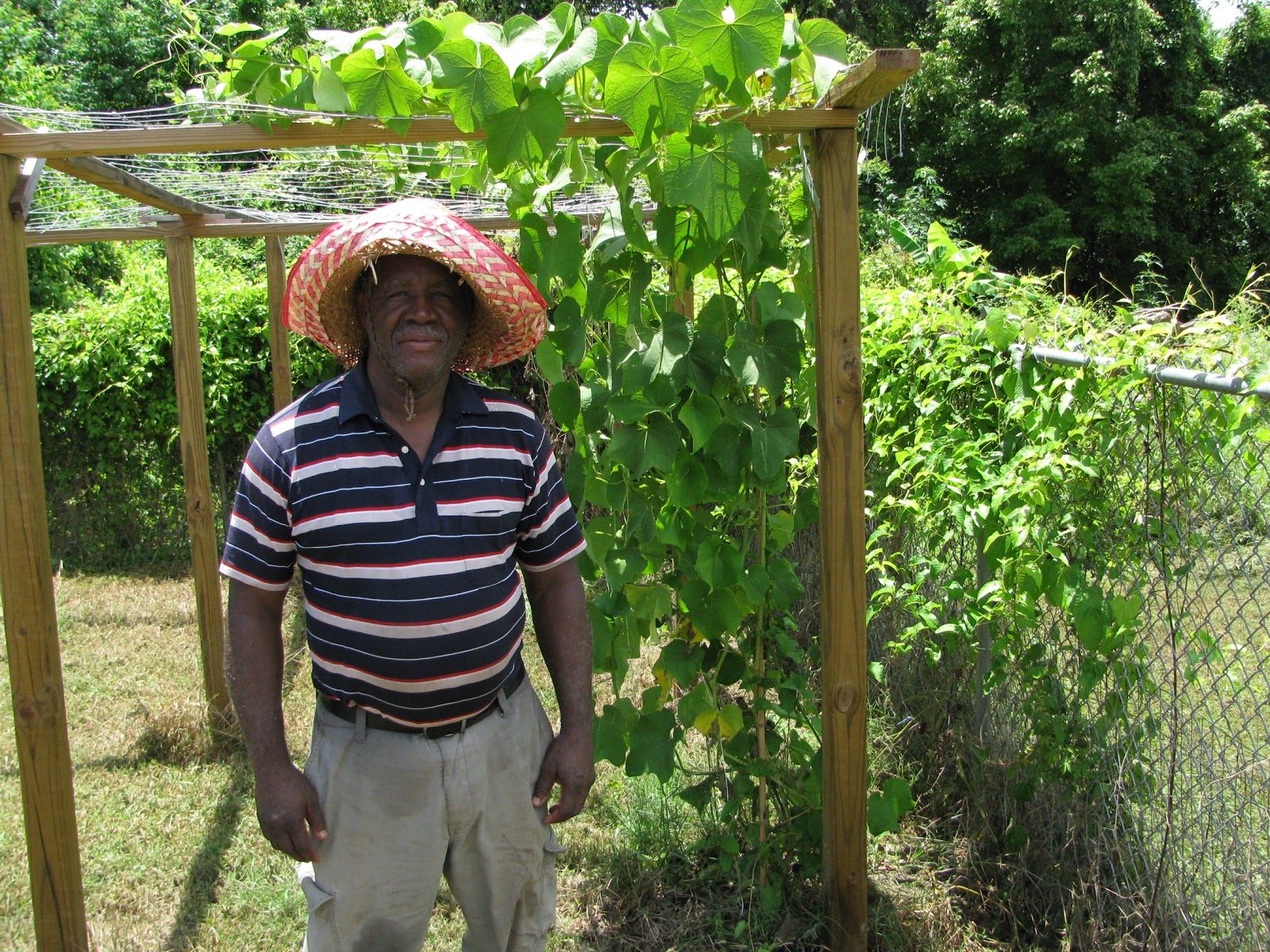
Then came the hurricane. “Mirlitons are very sensitive to water. 48 hours underwater will kill the plant,” says Hill. The floodwaters from Katrina lasted far longer than two days, submerging cars and houses, not to mention delicate green vines. When the waters receded, the backyard gardens neighbors had labored over for years were gone.
It was, partly, the hurricane that woke Hill up. The injustice of the government response to the hurricane, which disproportionately displaced and killed elderly and low-income Black New Orleanians, clung to Hill’s conscience. He was vocal about what he saw as attempts to bar these same residents from moving back; his outspokenness lost him friends. At the same time, he says, “I saw in much of the community an attempt to reconnect through identifying a common past.” For Hill, a Kansas transplant who had been introduced to the mirliton by a New Orleans neighbor 40 years before, mirlitons embodied that shared history. Growing the squash was a way to enter back into community.
Hill’s initial conversion was sparked by simple home-gardener’s frustration. After the storm, when trying to grow his own mirlitons, he realized that supermarket mirlitons would not thrive in Louisiana. To learn more, he began chasing the ghost of mirlitons through archives and research papers, tracing the fruits’ likely missionary introduction to India, its role in regional food sovereignty movements, and its preparation in cuisines across the world.
He also chased the physical fruit. Hill and Paul D’Anna set off in search of heirlooms on a series of road trips across Louisiana. In far flung corners of the state, they found, nurtured by small-scale farmers who were mostly in their 80s and 90s, what they thought had been lost: ridged and fuzzy mirlitons, their “ugly” skin a telltale sign of their heirloom status. Hill named the cultivars after the farmers who had developed them: the Papa Sylvest, its lobed fruit the color of an avocado’s flesh; the Ishreal Thibodeaux, a rare shell-white variety likely descended from a Puerto Rican import.

Hill’s efforts, in partnership with the Crescent City Farmers Market, grew into the 2008 Adopt-a-Mirliton project. In 2010, Hill founded Mirliton.org. For the first few years, seeds were so precious that growers were loath to eat their fruits. But more recently, the heirlooms have taken root. Their fruit is so plentiful, says Hubbell, who has been collaborating with Hill from Mobile, he gives them away by the dozens, and has to find unique recipes for the rest: blanching and freezing them, macerating them in vinegar to make pickles. The New Orleans Botanical Garden has also managed to replenish its Katrina-devastated mirliton stock, and staff are hoping to have enough to incorporate the squashes into programming at their in-construction kitchen garden.
Hill has long held revolutionary aspirations—as an activist, his personal history is full of them. But his passion for mirlitons, he says, is driven by a humbler ambition: “Sometimes, to not go backwards is to make progress,” he says. Yet when he talks about mirlitons, a utopian streak steals into his speech. It’s hackneyed to claim that food can bridge divides, he says. Still, “I got it into my head that some way or another, mirlitons brought people together. It hasn’t separated them, that’s for sure.”
D’Anna is sometimes cynical about whether mirlitons will make a full recovery. “I want it to come back,” he says, but he worries that poor growing conditions and limited patience will ultimately thwart growers’ efforts. Still, he wakes every morning to check his plants’ progress: sometimes they’ve grown four inches in a day. And when he posts a classified ad for his surprise spring harvest, the listing reads like a prayer. “The vines are still flowering,” he writes of his backyard garden, its arbors spilling Papa Sylvester heirlooms. “God willing, we will have a good fall crop.”
Gastro Obscura covers the world’s most wondrous food and drink.
Sign up for our regular newsletter.






























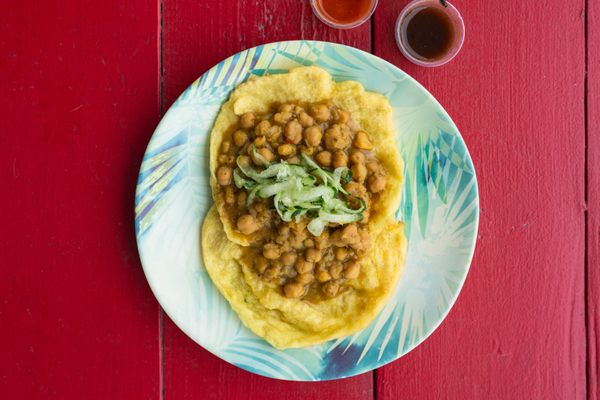


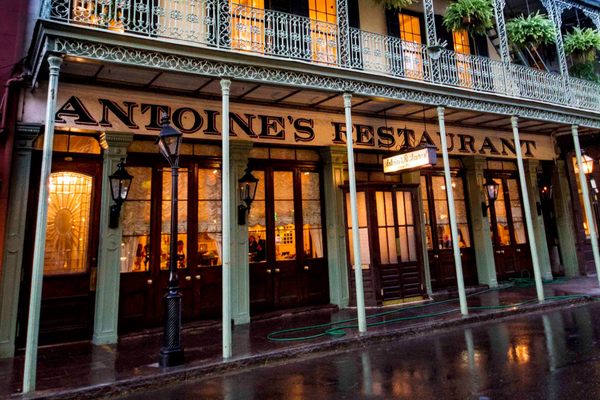


Follow us on Twitter to get the latest on the world's hidden wonders.
Like us on Facebook to get the latest on the world's hidden wonders.
Follow us on Twitter Like us on Facebook